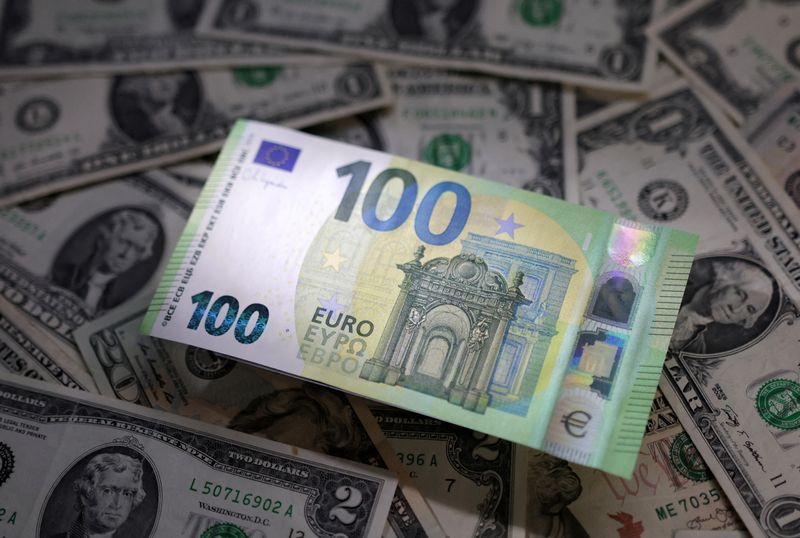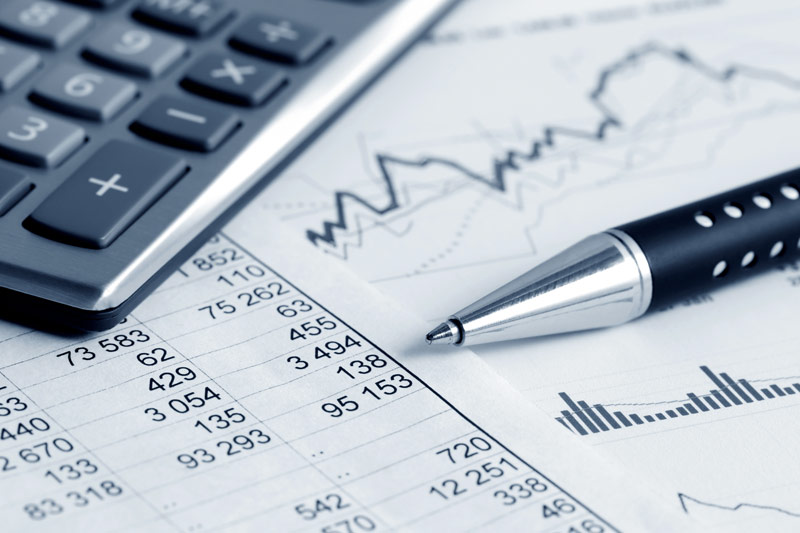By Sruthi Shankar and Alun John
(Reuters) -The euro is trading at its highest against the dollar this year, emerging as the clear winner after recent turmoil in global currency markets disrupted a strong dollar and halted a relentless slide in the Japanese yen.
After the euro decisively broke above the symbolic $1.10 level, the price gain of more than 2.5% in August is the best month since November.
Traders, distracted until now by the yen’s sudden rise following a surprise rate hike by the Bank of Japan on July 31 and a broad dollar exchange rate as expectations for US rate cuts mount, are paying attention.
After all, history shows that $1.10 is not an easy level to crack, and as recently as April some analysts speculated that the euro could weaken to parity.
It is now the second best performing major currency against the dollar this year, behind sterling, and is at an all-time high in trade-weighted terms, although that is also due to weakness in the currencies of the emerging markets.
The dollar’s gains, expected to be modest from here on out, are nevertheless notable as talk of rate cuts by the US Federal Reserve coincides with speculation that further easing by the European Central Bank could be limited by persistent inflation in the services sector .
“It’s a story about interest rate differentials,” says currency analyst Volkmar Baur of Commerzbank (ETR:).
“Inflation is falling on both sides (of the Atlantic), but the expectation is that the Fed will be a little more aggressive on the way down, and that will narrow interest rate differentials a bit and make way for a stronger euro.”
The ECB, which cut rates in June, could make at least two more cuts of 25 basis points, market prices show.
Traders, on the other hand, see 94 bp of Fed cuts over the three remaining meetings this year – implying three 25 bp moves, with a good chance of one bigger one. That’s a change of about 30 basis points from early August; ECB prices are much less volatile.
The shift followed weak U.S. labor market data, which sparked recession fears and shocked stocks and bonds. Markets have since calmed, but expectations for policy easing remain.
To be sure, it’s not just the euro that strengthened against the dollar in August, but the common currency is where there are the fewest complications for traders looking for a relatively safe currency bet.
The yen is volatile after the end of a huge carry trade. Pound sterling rose less in August after a British interest rate cut and French political risks, which hurt the euro in June, eased.
“We have seen some risks removed from the euro, such as the French elections,” said Salman Ahmed, global head of macro and strategic asset allocation at Fidelity International.
“It is now becoming a cleaner story about the central bank.”
GETTING HARDER
However, from this point onwards it may be difficult for the euro to make further progress.
Rates are at the top of recent trading ranges and there is less room for interest rate differentials to shift further in its favor, analysts said.
Commerzbank predicts the euro will reach $1.11 by the end of the year, unchanged from current levels. ING expects interest rates to reach $1.12 in a month before falling back to $1.10 and BofA expects $1.12 by the end of the year.
“My vision since the second quarter of 2023 has been to play within the trading range. You buy the euro at $1.05 and sell when it rises above $1.10,” said Mathieu Savary, chief European investment strategist at BCA Research.
For some, this could even be the win.
“These are the strongest levels for the euro you can expect between now and the end of the year,” said Guy Stear, head of developed markets strategy at the Amundi Investment Institute, who believes the case for further cuts by the ECB were more convincing than for the Fed.
The recent economic recovery in the eurozone is showing signs of slowing, while a gauge of German investor morale recorded its sharpest decline in two years in August.
In contrast, the next round of U.S. jobs data could show that July’s weak report was just a disruption caused by Hurricane Beryl.
Another complicating factor in the mix is the November 5 US presidential election.
While there are a lot of moving parts, analysts say Republican nominee Donald Trump’s policies of higher rates and lower taxes will likely lead to higher inflation, which means tighter Fed policy and a stronger dollar.

Jane Foley, head of currency strategy at Rabobank, noted that the euro’s recent rise came as his Democratic rival, US Vice President Kamala Harris, gained in the opinion polls.
“What could really push the euro/dollar above $1.10 and hold there is a Harris win and a slowdown in the US economy,” she said.


